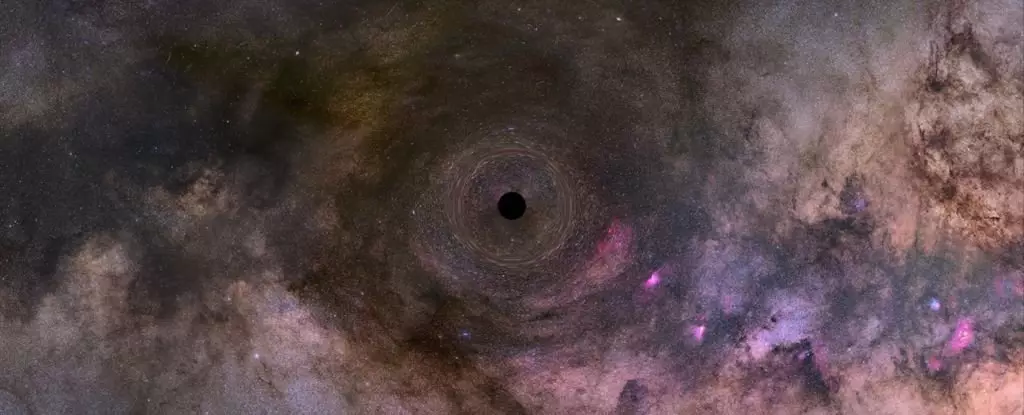In an astonishing breakthrough for astrophysics, scientists have finally confirmed the existence of a solitary black hole that wanders through the cosmos in isolation. This finding marks a significant milestone in our understanding of black holes, which are typically found in the company of companion stars or in binary systems. This unique black hole, located approximately 4,958 light-years away from Earth and possessing a mass roughly 7.15 times that of our Sun, defies conventional expectations by existing without a known partner, illustrating both the complexity and mystery of our universe.
The Mechanisms Behind Discovery
Unlike most black holes, which reveal their presence through gravitational interactions with nearby stars—causing their companions to wobble perceptibly—this solitary black hole has exhibited its existence through a fascinating method known as gravitational microlensing. Utilizing its intense gravitational field, it has been able to warp and amplify the light from a distant star, granting scientists a unique glimpse into its characteristics. This detection method not only highlights the ingenuity of astrophysical research but also showcases the innovative techniques employed to unveil the enigmatic nature of cosmic phenomena that are otherwise hidden from view.
Analyzing the Evidence: A Journey Through Time
The path to confirming this remarkable black hole has not been straightforward; it began in 2011 with observations from two separate surveys—the Optical Gravitational Lensing Experiment (OGLE) and Microlensing Observations in Astrophysics (MOA). Over the years, further scrutiny from the Hubble Space Telescope, which spanned eight observations across six years, allowed for a comprehensive analysis of the light distortions associated with this celestial object. These persistent efforts culminated in detailed photometric and spectroscopic data, leading to the conclusion that the dark entity was a single black hole.
However, this initial conclusion faced skepticism. In 2022, researchers re-evaluated the conditions surrounding the object, proposing an alternative theory that it might merely be a neutron star due to a revised mass estimate. Yet, further study, including a fresh round of observations from Hubble, reaffirmed the singular black hole narrative. This back-and-forth between hypotheses epitomizes the challenges researchers face in an ever-evolving field, where astronomy is often as much about meticulous verification as it is about groundbreaking discovery.
Challenges of Observation
One of the primary difficulties in observing this solitary black hole stemmed from its proximity to a much brighter star, complicating the data collection process. For scientists, accurately subtracting the overwhelming light emitted by this neighboring star was an exercise in precision and expertise. They employed intricate models to account for light fluctuations caused by various thermal conditions during Hubble’s orbits, emphasizing the significant technical challenges in modern astrophysics. The meticulous nature of this work was crucial in ensuring that the conclusions drawn about the black hole’s nature were reliable.
The Solitary Rogue: A Broader Perspective
This solitary black hole may be the first of its kind to be officially recognized, but astronomers postulate that the universe is likely teeming with similar cosmic outcasts. The rarity of such discoveries underscores a deeper, intriguing aspect of black holes: that many potentially exist hidden away, their dark characteristics obscured by the vastness of space. The study of this solitary entity thus opens a compelling dialogue within the scientific community, considering the implications of unseen black holes in the universe and how they may shape our understanding of cosmic evolution and the structure of galaxies.
As the science of astronomy advances, the exploration of isolated black holes may lead to further revelations, challenging our perceptions of black hole formation, evolution, and their role within the cosmic tapestry. The journey to understand such enigmatic objects not only covers the expanse of the universe but also the boundaries of human curiosity itself, cementing our drive to unveil the secrets that remain hidden in the dark.

